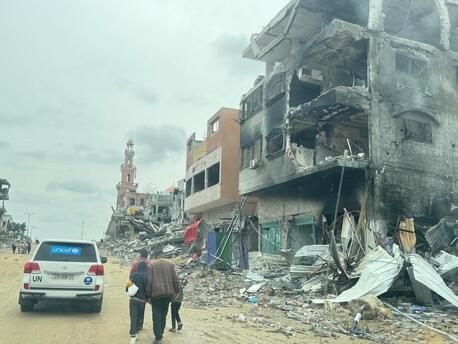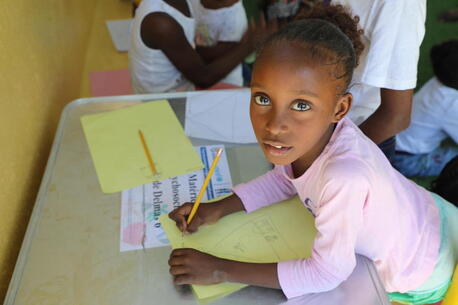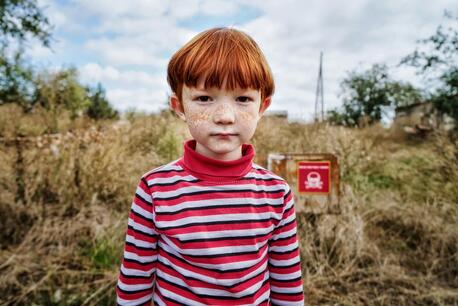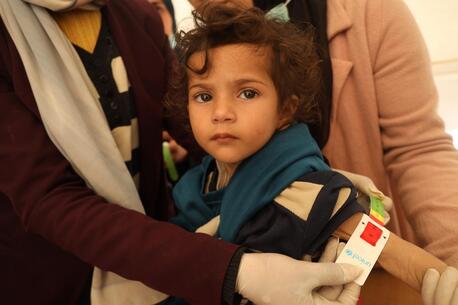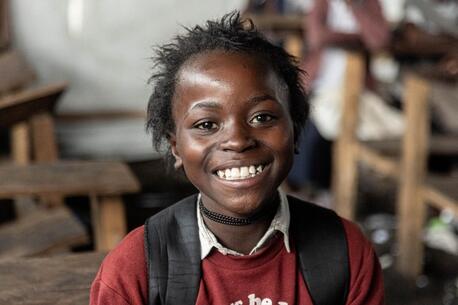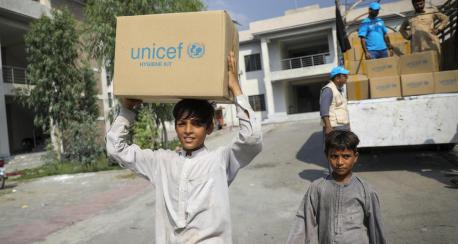
UNICEF’s Supply Powerhouse:
Delivering for the World's Children Since 1962
UNICEF procures and ships over 1,200 different items from its supply hub in Copenhagen — the world’s largest humanitarian warehouse — to meet the needs of vulnerable children and families.
Mobilizing emergency supplies: an important part of UNICEF's response in a crisis
One of the most important ways UNICEF fulfills its mission for children is by providing the supplies they need to survive, to stay healthy and safe, and to learn.
UNICEF's supply and logistics operation, based in Copenhagen since 1962, runs around the clock to make sure those supplies get to where they are needed the most, and fast.
Leveraging decades of experience and a vast partner network, UNICEF is able to deliver supplies anywhere in the world within 72 hours — to remote and other hard-to-reach areas, to war zones and disaster zones, despite lockdowns and supply chain breakdowns, despite inflation and price hikes and other challenges.
UNICEF's supply shipments go out during a conflict or crisis to support the humanitarian response. They go out to keep critical programs going, in health, nutrition, water, sanitation and hygiene (WASH), education and other areas.
The job, says Copenhagen-based Director of UNICEF Supply Division Etleva Kadilli, is "not as simple as buying products off the shelf. It requires close collaboration with diverse partners to ensure children in different countries and areas get what they need to live, improve their lives and be safe and healthy.”
It was the government of Denmark that funded the construction of UNICEF's warehouse in Copenhagen 60 years ago. It was initially built to pack health kits for maternity clinics and child health services. Now UNICEF procures and ships more than 1,200 different items from its Copenhagen hub, from medicines and medical equipment to therapeutic food and nutritional supplements; from water purifying tablets to hygiene supplies, Early Childhood Development kits to School-in-a-Box learning materials, and toys, games, soccer balls and other recreational items to help children coping with trauma.
Every hour of every day, these and other supplies are en route to destinations around the world. In 2021 alone — amid soaring pandemic-related needs — UNICEF mobilized $7.1 billion worth of goods and services for children in 160 countries and areas, their timely delivery providing a lifeline for the most vulnerable.
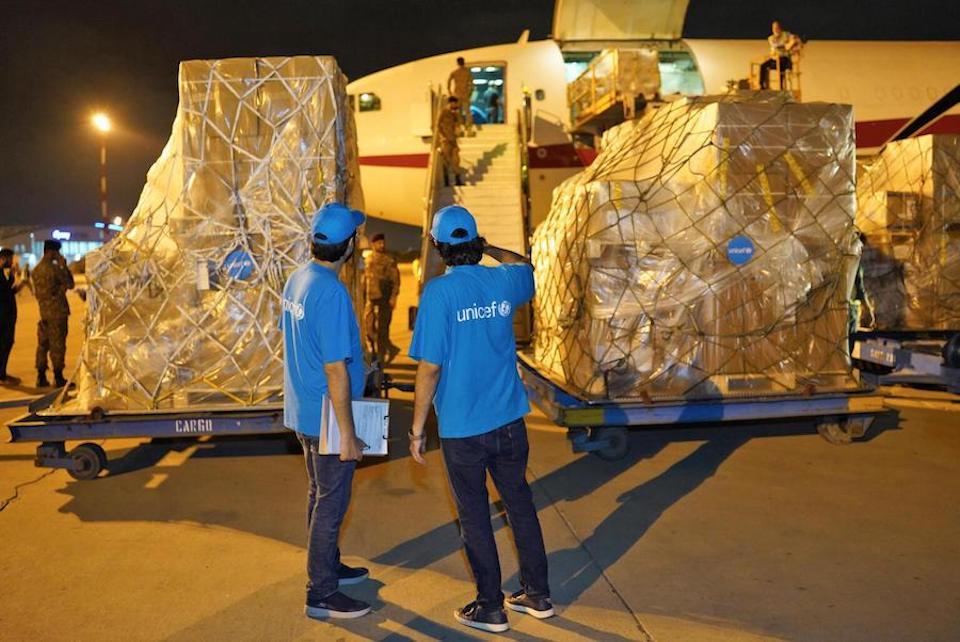
For decades, the UNICEF supply team has also been actively shaping markets to influence the quality and pricing of essential commodities, improve access and expedite delivery. These market-shaping efforts include working to increase the proportion of goods procured from local businesses. This shortens lead times, lowers shipping costs and reduces UNICEF's overall carbon footprint, while also spurring much-needed economic growth in those local markets.
That UNICEF is able to procure supplies of Ready-to-Use Therapeutic Food (RUTF) from a local source in Kenya has been hugely helpful to efforts to address the child malnutrition crisis in the Horn of Africa, for example.
![Photographer Jan Grarup, above visiting a school in Haiti, traveled to three continents to document the life-changing impacts of UNICEF’s supply and logistics operation. “Working [on this project] gave me an insight into how massive an operation it can be, to get supplies across huge distances to remote areas, whether it’s school supplies, COVID-19 vaccines or warm clothes for children in Lebanon and refugees who came from Syria,” he said. View a special exhibition of his work here.](/sites/default/files/styles/full_width/public/2023-02/960.Haiti-school-TTramborg-2022.jpg?itok=i6N4ZsHe)
More facts about UNICEF's Global Supply hub in Copenhagen
- stands eight stories high and measures 215,000+ sq. ft. — making it the largest humanitarian warehouse in the world
- can store up to 36,000 pallets of supplies at any given time
- is automated with robot cranes that move supplies in and out of its racking system, orchestrating the pallets’ positioning and deployments based on turnover and expiry dates
UNICEF Supply Division personnel provide guidance, support and training in warehouse and inventory management to UNICEF’s regional and country offices and to government partners.
UNICEF operates other supply hubs in Accra, Brindisi, Dubai (this one is shared with other UN agencies), Guangzhou and Panama to ensure that dispatches are efficient and timely, especially during emergencies. These sub-hubs store enough supplies to meet the needs of 250,000 people for three months.
What it will take to ensure the world's children can keep getting the support they need
As food and energy prices continue to rise, and with supply lines still reeling from the effects of the COVID-19 pandemic, more robust support for UNICEF’s supply operation is needed to meet children’s urgent and growing needs.
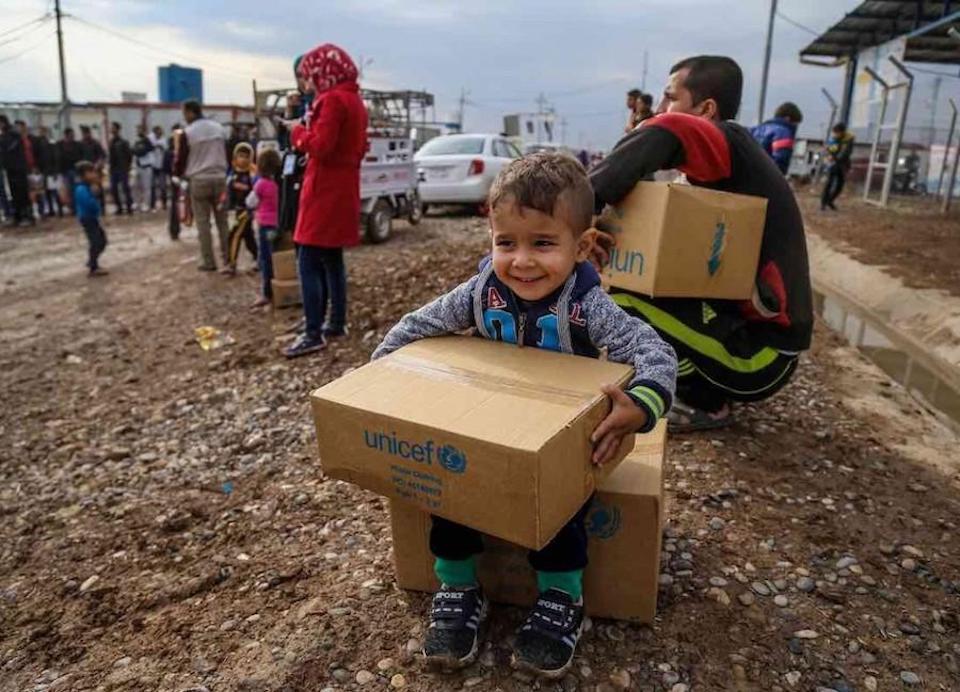
UNICEF is urging continued and increased support for its supply and logistics operation to ensure children continue to receive vital supplies when they need them most. Your contribution can help make a difference. Donate today.
Top photo: On Aug. 30, 2022, Amjad, 14, carries a box of UNICEF supplies distributed to families impacted by catastrophic flooding in Nowshera district, Khyber Pakhtunkhwa Province, Pakistan. © UNICEF/UN0696509/Zaidi

